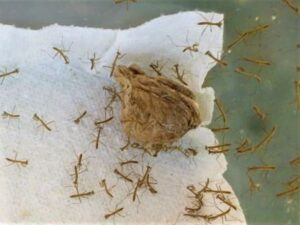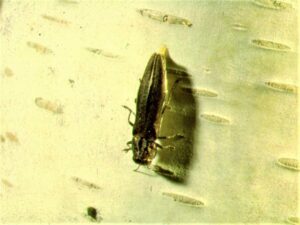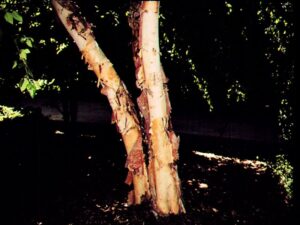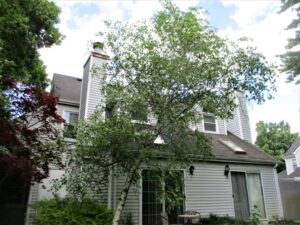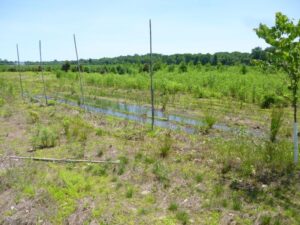The Douglas-fir Needle Midge (Contarinia pseudotsugae) is host specific to only Douglas-firs. The insect infests needles & symptoms create a twisted distortion having yellow banding discolorations with swollen areas. Inside the swollen areas of the needle are fly larvae (maggots) of the Douglas-fir needle midge (DFNM). Typically scouting observations for needle infestations can begin to be easily observed during mid-summer. At maturity, the swollen areas turn brown or purple. The maggot is less than 5.0 mm in size & later in the season, the larvae can be exposed by opening the necrotic swollen area using a sewing needle. Symptoms can mimic those caused by Cooley spruce gall adelgids. The needle cast diseases (Swiss or Rhabdocline) can also sometimes mimic the symptoms if the infestation is serious enough to cause thinning from excessive needle drop.
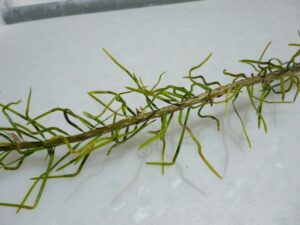
Late season symptoms from a severe infestation of the Douglas-fir Needle Midge. The resulting needle distortion & twisting can sometimes become extreme. (Photo Credit: Steven K. Rettke, Rutgers Coop. Ext.)


